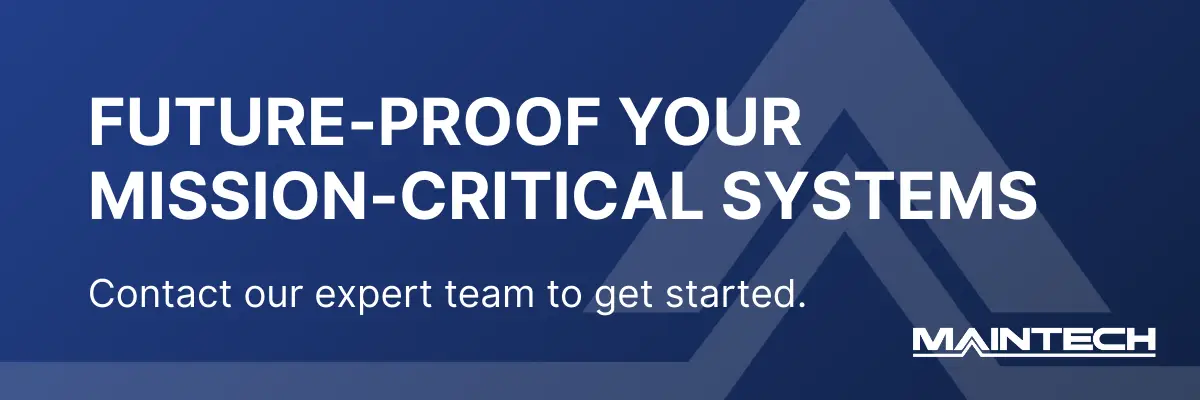For large enterprises, financial institutions, and technology firms where every second of downtime translates to substantial revenue loss, mission-critical systems cannot afford thermal failures.
With 22% of enterprises already implementing liquid cooling solutions in their data centers (and more than one-third expected to join them by 2026), it’s no surprise that direct-to-chip cooling is a fast-growing solution.
If your data center is facing the same fundamental physics problem – that traditional air cooling simply cannot meet the thermal management demands of your computing environment – this blog is for you.
What is Direct-to-Chip Cooling?
Direct-to-chip cooling is a type of thermal management philosophy. Rather than cooling entire server environments through ambient air circulation, this approach treats heat as a component-level engineering challenge that requires precision targeting.
The core principle is simple: capture heat exactly where it’s generated rather than letting it spread throughout server environments, where it becomes exponentially more difficult and energy-intensive to remove. This targeted strategy enables enterprises to support much higher computing densities while maintaining the thermal stability that mission-critical systems require.
How Direct-to-Chip Cooling Works
The operational principle centers on precision thermal transfer. Liquid coolant circulates through carefully engineered pathways that make direct contact with heat-generating components.
Heat absorption occurs at the component level, where specialized cooling plates capture thermal energy before it can spread to surrounding equipment.
This closed-loop approach offers several advantages:
- Targeted Heat Removal: By addressing thermal loads at their source, direct-to-chip cooling prevents heat accumulation that could affect neighboring components.
- Reduced Thermal Resistance: Direct contact eliminates the thermal barriers inherent in air-gap cooling, dramatically improving heat transfer efficiency.
- Scalable Performance: Modern systems adapt cooling capacity dynamically based on real-time thermal demands, ensuring optimal performance across varying operational conditions.
Why Choose Direct-to-Chip Over Enterprise Cooling Alternatives?
Traditional enterprise cooling solutions fall into three main categories, each with distinct limitations when supporting mission-critical systems:
- Air-Based Cooling: Conventional systems rely on computer room air conditioning to maintain ambient temperatures. While cost-effective for lower-density environments, air cooling becomes inadequate when rack densities exceed 15-20kW, making it unsuitable for modern high-performance computing.
- Traditional Liquid Cooling: While an improvement, row-based systems still rely on indirect heat transfer, cooling the environment around IT equipment rather than targeting heat sources directly.
- Immersion Cooling: Complete immersion submerges entire servers in non-conductive fluids. While thermally effective, immersion systems present significant operational challenges, including complex data center maintenance requirements and limited component accessibility.
Direct-to-chip cooling addresses these limitations by combining thermal efficiency with operational practicality. 2024 Arizton research indicates that direct-to-chip installations can deliver as much as 50% improvement in energy efficiency compared to traditional enterprise data centers while providing retrofit compatibility with existing infrastructure.
Direct-to-Chip Cooling’s Impact on Data Center System Uptime
The relationship between direct-to-chip cooling and system reliability extends beyond simple temperature control. Advanced thermal management creates multiple pathways to improved uptime performance:
- Thermal Stability and Performance Consistency
Mission-critical systems depend on consistent processing performance to meet service level agreements. Thermal fluctuations can cause processors to throttle performance or trigger protective shutdowns, directly impacting system availability. Direct-to-chip cooling maintains stable operating temperatures that enable consistent performance delivery.
- Reduced Component Stress
Excessive thermal cycling accelerates component degradation and increases failure rates. By maintaining stable thermal conditions, direct-to-chip cooling reduces the mechanical stress that contributes to premature component failures, translating into improved system reliability.
- Enhanced Density Support
Traditional cooling limitations often force enterprises to operate systems below full capacity to avoid thermal issues. Direct-to-chip cooling enables you to fully utilize your computing investments while maintaining thermal stability.
- Proactive Thermal Management
Modern systems provide real-time thermal data that enables predictive maintenance strategies. Maintech’s data center maintenance teams can therefore identify and address potential problems before they impact system availability.
The Role of Data Center Maintenance in Maximizing Uptime
While direct-to-chip cooling provides exceptional thermal management, maximizing uptime requires integrated maintenance strategies addressing all infrastructure components.
At Maintech, we draw on 50+ years of experience in our approach to data center maintenance:
Environmental Monitoring: Mission-critical systems require consistent conditions beyond temperature control. Humidity management, air quality monitoring, and contamination prevention all contribute to reliable operations.
Component-Level Integration: Direct-to-chip cooling systems generate valuable data about individual component thermal performance that informs broader maintenance strategies, enabling proactive component replacement (from one of over 100 Maintech forward stocking locations) and inspection scheduling.
Emergency Response: Comprehensive maintenance programs include emergency response procedures, backup cooling capacity, and rapid recovery protocols. Maintech’s data center maintenance expertise includes 24/7 emergency response capabilities for mission-critical systems.
Optimizing Mission-Critical System Performance
The transition to direct-to-chip cooling is a strategic investment in operational reliability and performance optimization. For enterprises managing mission-critical systems, advanced thermal management provides the foundation for consistent performance delivery and reduced operational risk.
Organizations seeking to maximize system uptime benefit from comprehensive approaches that integrate advanced cooling technology with professional data center maintenance services and ongoing optimization support. The result is infrastructure that consistently delivers the reliability and performance that today’s mission-critical systems demand.
Ready to Maximize System Uptime?
Contact Maintech today to explore how direct-to-chip cooling solutions and experienced data center maintenance experts can transform your infrastructure performance.


